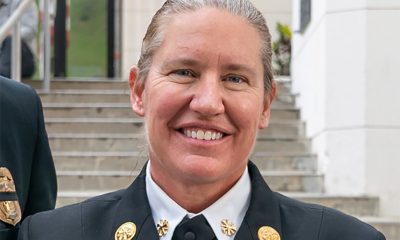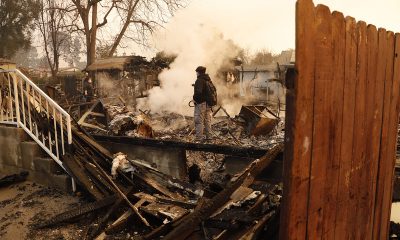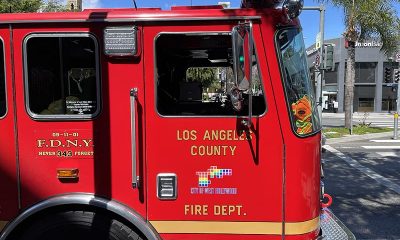Southern California
Triple A: Gas prices drop to within 50 cents of pre-spike levels
The average price for self-serve regular gasoline in California is $5.64, which is 24 cents lower than last week
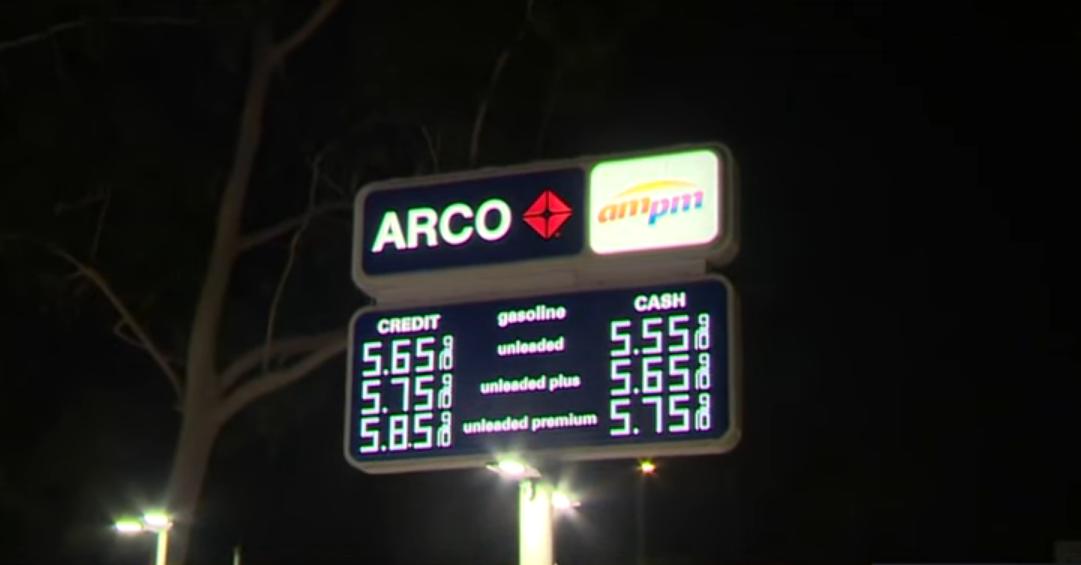
LOS ANGELES – Southern California gas prices continue to drop significantly with plenty of room to plunge further after the huge price spike that ended earlier this month, according to the Auto Club’s Weekend Gas Watch.
The average price for self-serve regular gasoline in California is $5.64, which is 24 cents lower than last week. The average national price is $3.76, which is eight cents lower than a week ago.
The average price of self-serve regular gasoline in the Los Angeles-Long Beach area is $5.71 per gallon, which is 22 cents lower than last week, 25 cents lower than last month, and $1.14 higher than last year. In San Diego, the average price is $5.67, which is 20 cents lower than last week, 23 cents lower than last month, and $1.15 higher than last year.
On the Central Coast, the average price is $5.68, which is 20 cents lower than last week, 23 cents lower than last month, and $1.17 higher than last year. In Riverside, the average per-gallon price is $5.53, which is 26 cents lower than last week, 27 cents lower than last month, and $1.05 higher than a year ago. In Bakersfield, the $5.84 average price is 20 cents lower than last Thursday, 13 cents higher than last month, and $1.35 higher than a year ago today.
“This morning’s Los Angeles wholesale gasoline price is $1.86 below its all-time record on Sept. 27 and $1.40 below its Oct. 4 price, just before California announced it would allow early sales of winter blend gasoline and helped to end the supply crisis that caused record Southern California pump prices in September and October,” said Auto Club spokesperson Doug Shupe. “Gas station price averages have dropped by 75 to 90 cents from their record levels in most areas so far, so there should still be room for additional substantial price drops as long as wholesale prices don’t significantly increase.”
The Auto Club reminds drivers of the following tips to save money on gas:
- If you use premium unleaded fuel, make sure it is required for your vehicle, not just recommended. The Auto Club’s Automotive Research Center found that vehicles with recommended premium fuel performed safely with regular unleaded gasoline.
- Make sure your tires are properly maintained and inflated to the correct level.
- Maintain your car according to the manufacturer’s recommendations. Regular service will ensure optimum fuel economy.
- Avoid “jackrabbit” starts and hard accelerations. These actions greatly increase fuel consumption.
- Slow down and drive the speed limit. Fuel economy peaks around 50 mph on most cars, then drops off as speed increases. Reducing freeway speeds by 5 to 10 mph can increase fuel economy by as much as 14%.
- Use cruise control on the highway to help maintain a constant speed and save fuel. However, never use cruise control on slippery roads because you could lose control of the vehicle.
- Minimize your use of air conditioning.
- Avoid extended idling to warm up the engine, even in colder temperatures. It’s unnecessary and wastes fuel.
- Remove unnecessary and heavy items from your car.
- Minimize your use of roof racks and remove special carriers when not in use.
- Download the AAA App to find the cheapest gas prices near you.
The Weekend Gas Watch monitors the average price of gasoline. As of 9 a.m. on Oct. 27, averages are:

Community Services - PSA
LGBTQ+ voter education town hall held tonight in Los Angeles
Unique Women’s Coalition, Equality California and FLUX host discussion on upcoming election.
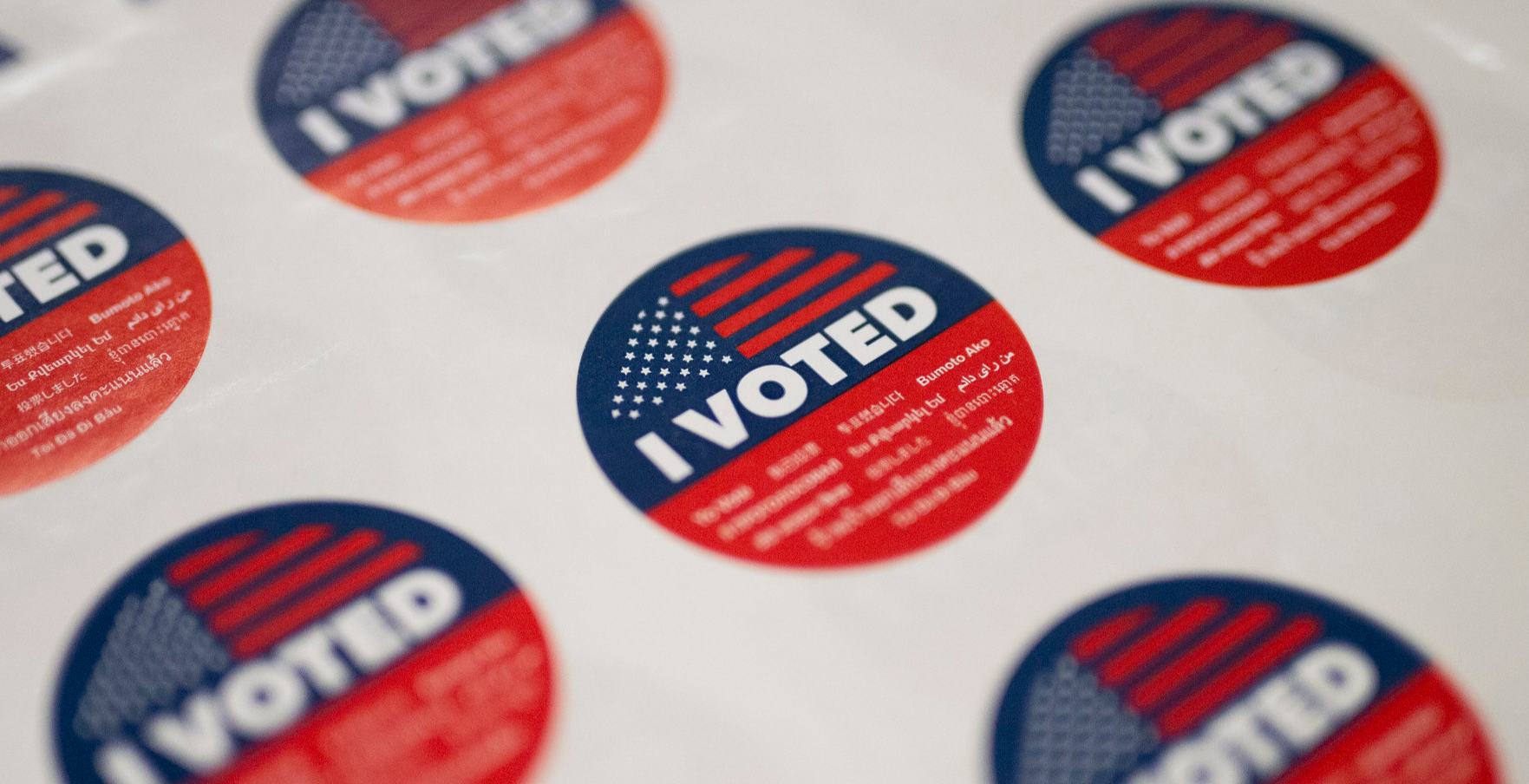
The Unique Women’s Coalition, Equality California and FLUX, a national division of the AIDS Healthcare Foundation, will host their second annual voter education town hall today at the Connie Norman Transgender Empowerment Center in Los Angeles from 7PM to 9PM tonight.
The organizations will present and discuss ballot propositions and measures that will appear on the November ballot and that affect the LGBTQ+ community in this part of the town hall series titled ‘The Issues.’
“The trans and nonbinary community is taking its seat at the table, and we are taking the time and space to be informed and prepare the voter base,” said Queen Victoria Ortega, international president of FLUX.
The town hall will feature conversations through a Q&A followed by a reception for program participants, organizational partners and LGBTQ+ city and county officials.
There will later be a third town hall before the election and The Connie Norman Transgender Empowerment Center will also become a voting location for anyone who feels like they need a safe space to vote, regardless of what voting district they are a part of.
“Our community is really asking for a place to talk about what all of this actually means because although we live in a blue sphere, housing and other forms of discrimination are still a very real threat,” said Scottie Jeanette Madden, director of advocacy at The Connie Norman Transgender Empowerment Center.
Southern California
Triple A: SoCal gas prices continue dropping quickly
The average price for self-serve regular gasoline in California is $4.87, which is 11 cents lower than a week ago
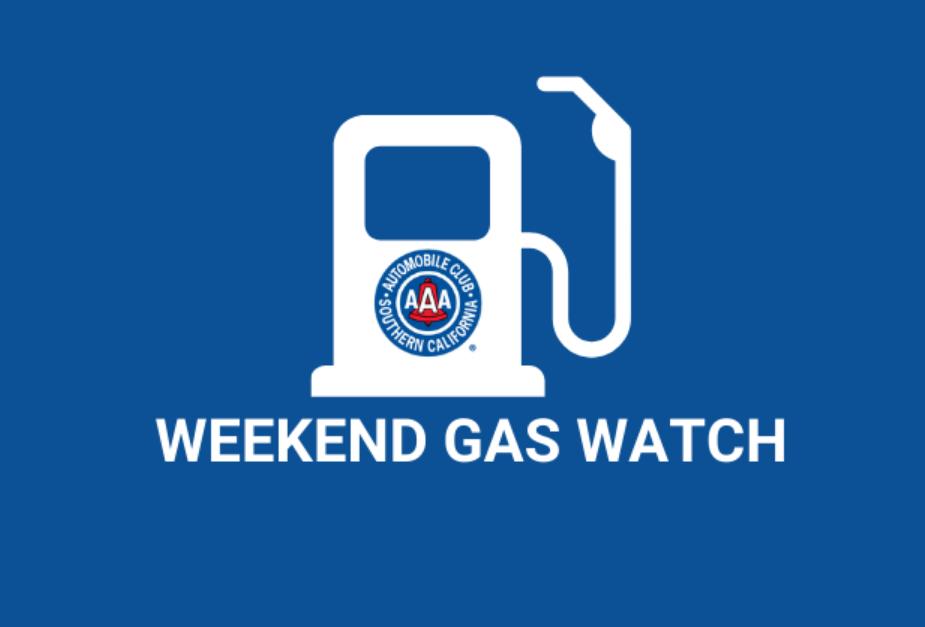
LOS ANGELES – Gas prices in Southern California have dropped by more than 50 cents a gallon in most areas after two straight months of price declines, according to the Auto Club’s Weekend Gas Watch. The average price for self-serve regular gasoline in California is $4.87, which is 11 cents lower than a week ago. The average national price is $3.46, which is two cents lower than a week ago.
The average price of self-serve regular gasoline in the Los Angeles-Long Beach area is $4.83 per gallon, which is 10 cents less than last week and 13 cents less than last year. In San Diego, the average price is $4.85, which is 10 cents lower than last week and eight cents lower than this time last year.
On the Central Coast, the average price is $4.97, which is five cents lower than last week and two cents higher than last year. In Riverside, the average per-gallon price is $4.75, which is 10 cents lower than last week and 10 cents lower than a year ago. In Bakersfield, the $4.96 average price is eight cents less than last week and nine cents higher than a year ago today.
“Oil Price Information Service reports the latest Energy Information Administration data shows that West Coast refinery utilization rates reached their highest production levels of 2024 at the beginning of this month,” said Auto Club Spokesperson Doug Shupe. “California continues to have the highest gas prices in the U.S., but this week for the first time since March, gas prices in most local areas are lower than at this time a year ago.”
The Weekend Gas Watch monitors the average price of gasoline. As of 9 a.m. on June 13, averages are:

Southern California
Triple A: Statewide gas price average drops below $5 a gallon
The average price for self-serve regular gasoline in California is $4.98, which is 11 cents lower than a week ago

LOS ANGELES – The California gas price average dropped below $5 a gallon for the first time since late March, according to the Auto Club’s Weekend Gas Watch. The average price for self-serve regular gasoline in California is $4.98, which is 11 cents lower than a week ago. The average national price is $3.48, which is eight cents lower than a week ago.
The average price of self-serve regular gasoline in the Los Angeles-Long Beach area is $4.93 per gallon, which is 12 cents less than last week and the same price as last year. In San Diego, the average price is $4.95, which is 12 cents lower than last week and six cents higher than this time last year.
On the Central Coast, the average price is $5.02, which is eight cents lower than last week and 12 cents higher than last year. In Riverside, the average per-gallon price is $4.95, which is 11 cents lower than last week and three cents higher than a year ago. In Bakersfield, the $5.04 average price is eight cents less than last week and 17 cents higher than a year ago today.
“According to Oil Price Information Service, Los Angeles wholesale gasoline prices are dropping as large supplies of imported gasoline continue to arrive in Southern California,” said Auto Club Spokesperson Doug Shupe. “A few Southern California gas stations are now charging less than $4.10 a gallon for regular unleaded.”
The Weekend Gas Watch monitors the average price of gasoline. As of 9 a.m. on June 6, averages are:

Southern California
‘Heat dome’ brings scorching conditions but coastal areas spared
The Los Angeles County Health Officer has issued an excessive heat warning as high temperatures have been forecast
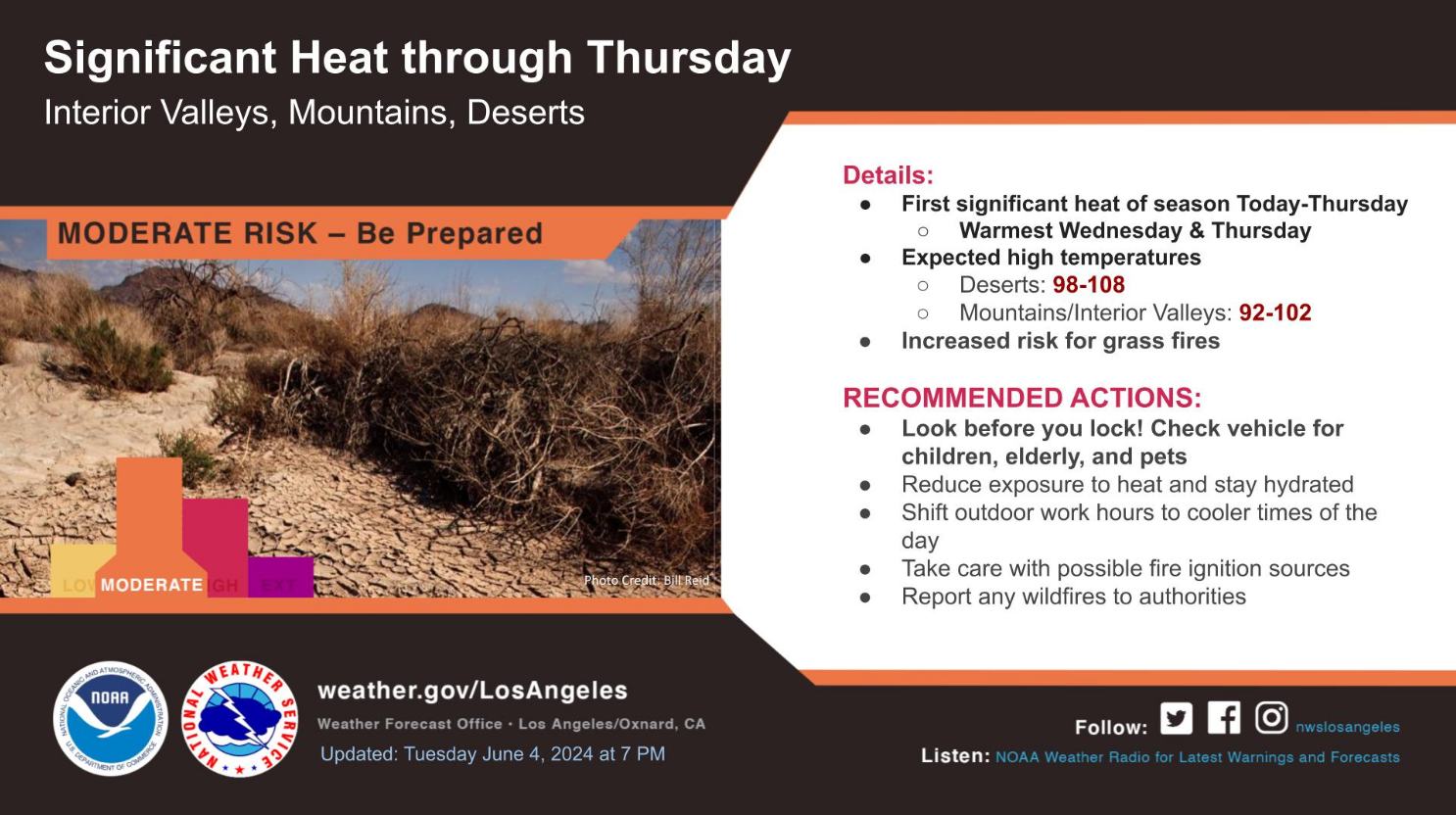
OXNARD, Calif. – The first significant heat of the season has arrived for the interior, and is expected to last into Thursday. Temperatures will be warmest Wednesday and Thursday, with highs in the deserts from 98 to 108, and 92 to 102 for the mountains and interior valleys.
Drier conditions along with breezy conditions will lead to an increased risk for grass fires. Reduce exposure to the heat, and stay hydrated. Look before locking vehicles for children, elderly and pets. Vehicles can become dangerously hot in a short period of time. Report any wildfires to authorities.
High Temperatures Forecast for Parts of Los Angeles County
The Los Angeles County Health Officer has issued an excessive heat warning as high temperatures have been forecast for the following areas:
- Antelope Valley: Wednesday June 05, 2024 through Thursday June 06, 2024
- Western Antelope Valley: Wednesday June 05, 2024 through Thursday June 06, 2024
- Eastern Antelope Valley: Wednesday June 05, 2024 through Thursday June 06, 2024
Public Health reminds everyone to take precautions to avoid heat-related illness, especially older adults, young children, outdoor workers, athletes, and people with a chronic medical condition who are especially sensitive to negative health impacts from extreme heat. Public Health offers the following recommendations during high temperature days:
- Drink plenty of water and keep hydrated throughout the day.
- If you must go out, plan your day to avoid going out during the hottest hours, and wear sunscreen. Wear lightweight, light-colored clothes, and wear a hat or use an umbrella.
- Cars get very hot inside, even if the windows are ‘cracked’ or open. Never leave children or pets in cars. Call 911 if you see a child or pet in a car alone.
- Beware of and know what to do for heat-related illness, such as heat exhaustion and heat stroke. Call 911 right away if you see these symptoms: high body temperature (103°F or higher), vomiting, dizziness, confusion, and hot, red, dry, or damp skin. Heat stroke is a medical emergency.
- Check on those at risk for heat-related illness, like those who are sick or have chronic conditions, older adults, pregnant women, children, those who live alone, pets, and outdoor workers and athletes.
- If you are wearing a mask, avoid strenuous workouts wearing face coverings or masks not intended for athletic purpose
- Visit your power company’s website or contact them by phone to determine if you are scheduled for a rolling power outage.
“On hot days, it’s important for everyone to both take care of themselves and check on others, especially those who have a higher chance of getting ill due to the heat. Some of them include children, the elderly, those with health conditions, pregnant people, those living alone, and pets,” said Muntu Davis, MD, MPH, Los Angeles County Health Officer. “Hot days can be dangerous for anyone, so it’s crucial to stay cool and hydrated. Never leave children, the elderly, or pets alone in hot homes, places, or vehicles. Make sure to check on elderly or unwell neighbors and relatives regularly.”
County and City partners have planned ways to safely operate cooling centers during times of high heat. Residents who do not have access to air conditioning are encouraged to take advantage of these free cooling centers. To find a location near you, visit https://ready.lacounty.gov/heat/ or call 211.
Los Angeles County residents and business owners, including people with disabilities and others with access and functional needs can call 2-1-1 for emergency preparedness information and other referral services. The toll-free 2-1-1 number is available 24 hours a day, seven days a week. 211 LA County services can also be accessed by visiting 211la.org.
Southern California
Triple A: Finally, some SoCal cities drop below $5 a gallon
The average price for self-serve regular gasoline in California is $5.09, which is six cents lower than a week ago

LOS ANGELES – Six straight weeks of price drops at Southern California gas stations have pushed average prices below $5 a gallon in a few cities, according to the Auto Club’s Weekend Gas Watch. The average price for self-serve regular gasoline in California is $5.09, which is six cents lower than a week ago. The average national price is $3.56, which is four cents lower than a week ago.
The average price of self-serve regular gasoline in the Los Angeles-Long Beach area is $5.05 per gallon, which is six cents less than last week and 12 cents higher than last year. In San Diego, the average price is $5.07, which is six cents lower than last week and 17 cents higher than this time last year.
On the Central Coast, the average price is $5.10, which is six cents lower than last week and 21 cents higher than last year. In Riverside, the average per-gallon price is $4.96, which is six cents lower than last week and 13 cents higher than a year ago. In Bakersfield, the $5.12 average price is five cents less than last week and 29 cents higher than a year ago today.
“Oil Price Information Service reports that wholesale Los Angeles gasoline prices are continuing to drop because of increased availability of imported gasoline and reportedly lower levels of demand compared to last year,” said Auto Club Spokesperson Doug Shupe. “Those factors should help pump price drops to continue for now.”
The Weekend Gas Watch monitors the average price of gasoline. As of 9 a.m. on May 30, averages are:

Southern California
Triple A: Memorial Day travelers get a break at the pump
The average price for self-serve regular gasoline in California is $5.15, which is nine cents lower than a week ago

LOS ANGELES – Gas prices continued downward for a fifth straight week, giving some Southern California Memorial Day travelers the chance to fill up for about $4.50 a gallon or even less in a few areas, according to the Auto Club’s Weekend Gas Watch. The average price for self-serve regular gasoline in California is $5.15, which is nine cents lower than a week ago. The average national price is $3.61, which is one cent higher than a week ago.
The average price of self-serve regular gasoline in the Los Angeles-Long Beach area is $5.11 per gallon, which is ten cents less than last week, 27 cents less than last month, and 25 cents higher than last year. In San Diego, the average price is $5.13, which is ten cents lower than last week, 23 cents lower than last month, and 29 cents higher than this time last year.
On the Central Coast, the average price is $5.16, which is five cents lower than last week, 17 cents lower than last month, and 30 cents higher than last year. In Riverside, the average per-gallon price is $5.02, which is ten cents lower than last week, 28 cents lower than last month and 25 cents higher than a year ago. In Bakersfield, the $5.17 average price is five cents less than last week, 15 cents less than last month, and 36 cents higher than a year ago today.
“With an all-time record number of Southern California travelers expected for this Memorial Day getaway weekend, the gas price drops are providing some welcome relief,” said Auto Club Spokesperson Doug Shupe. “Those travelers who are planning out-of-state trips should expect to pay even less when they fuel up for their return, since California continues to be the only U.S. state with a gas price average above $5 a gallon.”
The Weekend Gas Watch monitors the average price of gasoline. As of 9 a.m. on May 23, averages are:

Southern California
Triple A: Gas prices drop for four straight weeks
The average price for self-serve regular gasoline in California is $5.24, which is eight cents lower than a week ago

LOS ANGELES – Local gas prices have dropped for four straight weeks, but California continues to be the only state with an average price above $5 a gallon, according to the Auto Club’s Weekend Gas Watch. The average price for self-serve regular gasoline in California is $5.24, which is eight cents lower than a week ago. The average national price is $3.60, which is four cents lower than a week ago.
The average price of self-serve regular gasoline in the Los Angeles-Long Beach area is $5.21 per gallon, which is eight cents less than last week, 18 cents less than last month, and 37 cents higher than last year. In San Diego, the average price is $5.23, which is six cents lower than last week, 14 cents lower than last month, and 41 cents higher than this time last year.
On the Central Coast, the average price is $5.22, which is five cents lower than last week, 14 cents lower than last month, and 38 cents higher than last year. In Riverside, the average per-gallon price is $5.12, which is eight cents lower than last week, 19 cents lower than last month and 36 cents higher than a year ago. In Bakersfield, the $5.23 average price is three cents less than last week, eight cents less than last month, and 40 cents higher than a year ago today.
“California continues to have the highest average gas prices in the U.S., and despite a month of price declines, the state average price is still more than 40 cents higher than Hawaii, which is the second most expensive state for fuel,” said Auto Club Spokesperson Doug Shupe.
The Weekend Gas Watch monitors the average price of gasoline. As of 9 a.m. on May 16, averages are:

Southern California
Triple A: Gas prices head down for third straight week
The average price for self-serve regular gasoline in California is $5.32, which is six cents lower than a week ago

LOS ANGELES – Southern California gas prices have dropped for the third straight week, according to the Auto Club’s Weekend Gas Watch. The average price for self-serve regular gasoline in California is $5.32, which is six cents lower than a week ago. The average national price is $3.64, which is three cents lower than a week ago.
The average price of self-serve regular gasoline in the Los Angeles-Long Beach area is $5.28 per gallon, which is six cents less than last week, six cents less than last month, and 42 cents higher than last year. In San Diego, the average price is $5.29, which is five cents lower than last week, five cents lower than last month, and 44 cents higher than this time last year.
On the Central Coast, the average price is $5.27, which is six cents lower than last week, two cents lower than last month, and 41 cents higher than last year. In Riverside, the average per-gallon price is $5.20, which is seven cents lower than last week, five cents lower than last month and 43 cents higher than a year ago. In Bakersfield, the $5.26 average price is four cents less than last week, five cents more than last month, and 42 cents higher than a year ago today.
“According to Oil Price Information Service (OPIS), California and all West Coast refineries are continuing to operate at higher capacities and West Coast gasoline inventories are increasing in anticipation of higher summer demand,” said Auto Club Spokesperson Doug Shupe.
The Weekend Gas Watch monitors the average price of gasoline. As of 9 a.m. on May 9, averages are:

Southern California
Triple A: SoCal gas prices continue downward
The average price for self-serve regular gasoline in California is $5.38, which is three cents lower than a week ago

LOS ANGELES – Southern California gas prices are continuing to drop for a second straight week, according to the Auto Club’s Weekend Gas Watch. The average price for self-serve regular gasoline in California is $5.38, which is three cents lower than a week ago. The average national price is $3.67, which is one cent higher than a week ago.
The average price of self-serve regular gasoline in the Los Angeles-Long Beach area is $5.34 per gallon, which is three cents less than last week, 18 cents higher than last month, and 44 cents higher than last year. In San Diego, the average price is $5.34, which is two cents lower than last week, 19 cents higher than last month, and 45 cents higher than this time last year.
On the Central Coast, the average price is $5.33, which is the same as last week, 22 cents higher than last month, and 45 cents higher than last year. In Riverside, the average per-gallon price is $5.27, which is two cents lower than last week, 21 cents higher than last month and 45 cents higher than a year ago. In Bakersfield, the $5.30 average price is one cent less than last week, 29 cents more than last month, and 44 cents higher than a year ago today.
“After a few months of supply interruptions from refinery breakdowns and maintenance, Oil Price Information Service (OPIS) reports that California refineries have been operating at above 86% of their capacity for the past two weeks,” said Auto Club Spokesperson Doug Shupe. “Additionally, OPIS reported the US Energy Information Administration believes that the country has already experienced its highest gas price point for the first half of this year. Although California prices often go against national trends, that prediction is an encouraging sign for further price drops at the pump.”
The Weekend Gas Watch monitors the average price of gasoline. As of 9 a.m. on May 2, averages are:

Southern California
Triple A: Southern California gas prices begin to slowly decrease
The average price for self-serve regular gasoline in California is $5.41, which is four cents lower than a week ago

LOS ANGELES – Southern California gas prices slightly decrease in almost every metro city, according to the Auto Club’s Weekend Gas Watch. The average price for self-serve regular gasoline in California is $5.41, which is four cents lower than a week ago. The average national price is $3.66, which is also one cent higher than a week ago.
The average price of self-serve regular gasoline in the Los Angeles-Long Beach area is $5.37 per gallon, which is two cents less than last week, 33 cents higher than last month, and 44 cents higher than last year. In San Diego, the average price is $5.36, which is two cents lower than last week, 34 cents higher than last month, and 45 cents higher than this time last year.
On the Central Coast, the average price is $5.33, which is two cents lower than last week, 31 cents higher than last month, and 43 cents higher than last year. In Riverside, the average per-gallon price is $5.29, which is three cents lower than last week, 37 cents higher than last month, and 45 cents higher than a year ago. In Bakersfield, the $5.31 average price is the same as last week, 40 cents more than last month, and 43 cents higher than a year ago today.
“For the first time in almost two months prices in Southern California have slightly decreased,” said Auto Club Spokesperson Doug Shupe. “The reasons for gas prices moving lower include slowing domestic gasoline demand between Spring Break and summer travel, as well as the cost of crude oil retreating.”
The Weekend Gas Watch monitors the average price of gasoline. As of 9 a.m. on April 25, averages are:
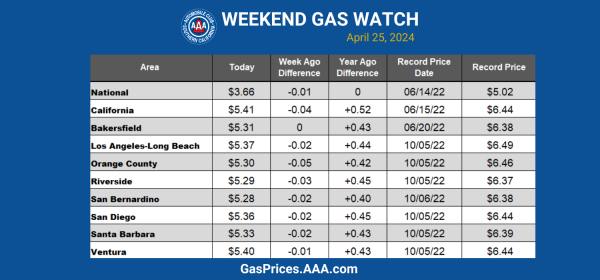
-

 Viewpoint4 days ago
Viewpoint4 days agoI’m a queer Iranian Jew. Why I stand with Israel during this conflict
-

 Congress4 days ago
Congress4 days agoWhite House finds Calif. violated Title IX by allowing trans athletes in school sports
-
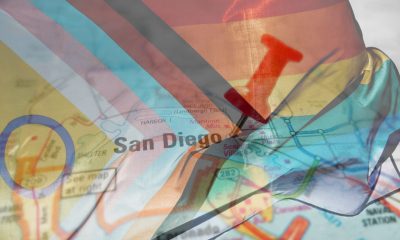
 News5 days ago
News5 days agoDrama unfolds for San Diego Pride ahead of festivities
-

 Books2 days ago
Books2 days agoTwo new books on dining out LGBTQ-style
-

 a&e features3 days ago
a&e features3 days agoLatina Turner comes to Bring It To Brunch
-

 Television3 days ago
Television3 days ago‘White Lotus,’ ‘Severance,’ ‘Andor’ lead Dorian TV Awards noms
-
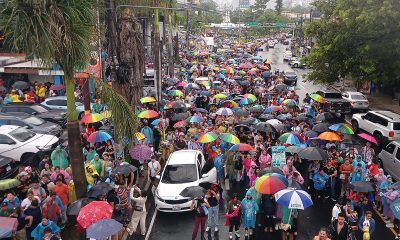
 El Salvador2 hours ago
El Salvador2 hours agoLa marcha LGBTQ+ desafía el silencio en El Salvador

